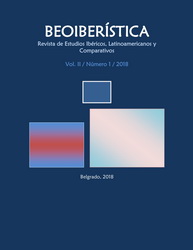LA ESTRUCTURA ÚTIL DEL CAMPO SEMÁNTICO COMO SUPRAUNIDAD LÉXICA (EJEMPLO DE LOS SUSTANTIVOS COMUNES QUE DESIGNAN EL CUERPO HUMANO)
THE USEFUL STRUCTURE OF THE SEMANTIC FIELD AS A LEXICAL SUPRAUNIT (EXAMPLES OF COMMON NOUNS THAT DESIGNATE THE HUMAN BODY)
Author(s): Rafael del Moral AguileraSubject(s): Language studies, Lexis, Semantics
Published by: Филолошки факултет, Универзитет у Београду
Keywords: onomasiology; thesaurus; semantic fields; hyperonym; holonym
Summary/Abstract: Dictionaries transmit lexical information by means of words in units. In semasiological dictionaries, each entry communicates one or more meanings. Dictionaries that present words in semantic fields, called thesauri, are far less common. Reference is made to three lexicologists who have published works containing 1,000 or more semantic fields in which the voices and expressions of a language have been collected – Peter Roget for English, and Eduardo Benot and Julio Casares for Spanish. The lexical suprasegments of these dictionaries have been and continue to be useful for many users, with their shortcomings as well as their advantages. This article’s focus seeks to expound upon the design and the principles that inspired me as the author of Diccionario Ideológico – Atlas Léxico de la Lengua Española. Specifically, I elaborate on the useful arrangements of the semantic fields that were entirely organized with the ease and utility of the reader in mind. I proposed improvements – about which I still don't know whether they were correct or not – such as a greater uniformity in the selection of fields, a categorization that includes voices that, like the branches of a tree, depend on each other and a system of characterization and classification that would make it easier to identify the meaning of words by the place they occupy in the design of the semantic field. To exemplify these techniques, we will use the semantic field of those common nouns that designate the human body, such as man, woman, child, old man, and which consist of some seven hundred words. The article breaks down procedures to facilitate the location, identification, and meaning of words and expressions. The ultimate goal of the Atlas léxico is for the user to find previously unknown words when searching for a better and more accurate use of the rich lexicon.
Journal: BEOIBERÍSTICA - Revista de Estudios Ibéricos, Latinoamericanos y Comparativos
- Issue Year: 2/2018
- Issue No: 1
- Page Range: 13-25
- Page Count: 13
- Language: Spanish

